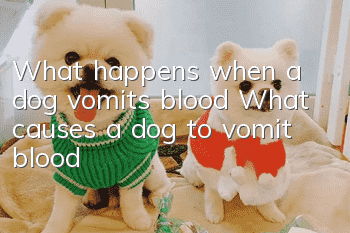Do you know what information is on the packaging of dog food?

Regarding pet food, on the packaging of pet food, we can read a lot of information about the product - product name, ingredient list, net content, origin, manufacturer information, barcode, etc. This information cannot be written however we want. Write.
At least in the United States, pet food packaging must follow strict regulations, and any word must be used with caution to ensure that it truly reflects a series of characteristics of the product. It is the U.S. Food and Drug Administration (FDA) and the American Association of Feed Control Officers (AAFCO) who formulate this rule. Therefore, when choosing dog food, carefully interpret the pet food packaging to see the essence of the product more clearly.
1. Net content statement
Net content refers to the actual weight of the product in the package. Understanding the net content of the product can better help consumers judge the actual price of the product: the price of the product itself does not reflect the price per unit weight, because the packaging will make people There are some visual errors. Carefully calculating the cost per kilogram or per pound of the product can help consumers judge the actual value of the product.
2. Manufacturer’s name and address
"This product is manufactured by" is a responsibility statement that identifies product safety, quality, origin and other information. If the label says "Made for" or "Distributed by," then the food was manufactured by an outsourcer, but the label still defines the responsible party. Not all labels will indicate the manufacturer's detailed mailing address, but by law it must at least give a city or telephone directory. Many manufacturers will proactively indicate the billing information phone number to facilitate consumers to query relevant information. If a consumer has questions or complaints about a product, he can contact the responsible party for the product based on the guidance of this information.
3. Feeding Guide
Feeding guide refers to the instructive feeding amount for specific animals. It is usually displayed with the words "Daily feeding amount should meet /_g per kilogram of body weight." On some smaller canned packaging, this sentence may mean "feeding amount". The feeding guide is all in its entirety, while bagged food packaging has a larger surface area and may give more detailed instructions. The feeding guide is a recommendation, not an absolute standard. The feeding amounts mentioned are only to meet the most basic nutritional needs of dogs every day.
4. Energy Statement
Different types of pet food provide different amounts of energy. Different manufacturers refer to different standards when setting feeding guidelines, which also results in the energy that pets obtain from food every day cannot be generalized. AAFThe relevant regulations of CO require manufacturers to indicate the energy content.
5. Product name
The product name is what a dog food product is called. The product name is the first way for us to understand a product. Merchants naturally know this, so when naming many products, they will choose some complimentary words or terms to highlight them. Certain features, such as emphasizing a certain raw material of the product or the dog breed corresponding to the product, etc. If you strictly follow the FDA, there are 95% rule, 25% rule, 3% rule and taste rule in the product names of pet food packaging.
The first type of rule is called the "95% rule". This nomenclature applies mainly to products (usually canned) made of pure meat, poultry or fish. The names of these products are often straightforward and simple, such as "Beef for Dogs" or "Salmon Cat Food." Products named in this way must ensure that the ingredients mentioned in the product account for 95% of the total weight of the product (excluding water), and the top-ranked ingredient accounts for more than another ingredient.
The second type of rule is called the "25% rule" and applies to most canned and dry foods. When naming this kind of product, the content of the ingredients mentioned in the product name should account for between 25% and 95% of the total weight of the product (excluding water). At the same time, some specific descriptive words should be added to the product name. If a product The beef ingredient in the product accounts for a quarter, so this product can be called "beef dinner dog food", but this does not mean that beef is the highest content ingredient in the product. Under the "25% rule", the named ingredient of a product may not necessarily be its main ingredient, so be sure to check the ingredient list carefully before purchasing.
The third type of rule is called the "3% rule". This situation only applies to emphasizing a certain ingredient on the outer packaging that the manufacturer wants to highlight, but the content of this ingredient is not sufficient to meet the "25% rule". We may see the label "Contains cheese" on the product packaging of "Beef Dinner Dog Food", which means that the product contains at least 3% cheese.
The fourth category of rules can be called "taste rules". There is no strict limit on percentages for this naming method. The only requirement is that the product must be able to pass a taste test. This test is supervised and performed by AAFCO. No machinery is required for the test, and it is completely determined by some specially trained animals. These animals are trained to be sensitive only to certain foods with specific tastes, so their choice determines the ";Taste".
6. Ingredient list
According to regulations, all ingredients in dog food must be labeled from high to low according to their content, including the moisture content of each ingredient. This ranking table is the ingredient list of dog food. So, when you want to know what ingredients are most common in the dog food you want to buy, all you have to pay attention to is the ingredient list. This is why we suggested before that you read the ingredient list carefully when buying dog food.
- What are the common intestinal parasites in dogs? How much do you know?
- How to train a Border Collie to walk? A few steps to teach you!
- How to train a pet dog to understand human speech? Come and take a look!
- How to train a dog to be a police dog? The dog’s performance is unexpected!
- Prevention and treatment of common summer diseases in German Shepherds!
- Why do dogs have bloody stools? Several common reasons why dogs have loose stools and bloody stools!
- Which of the dog’s private behaviors are normal and which are abnormal?
- How to train Eurasian dogs to be obedient
- What medicine is better for dogs with suppurated skin?
- Pets keep scratching their mouths, beware of foreign objects stuck in the esophagus



